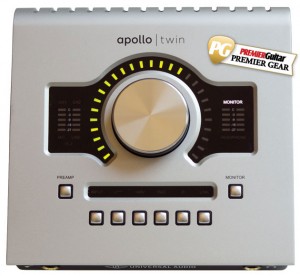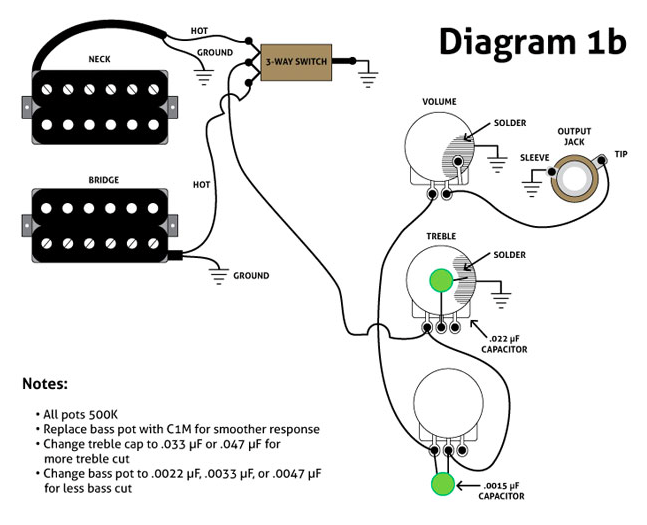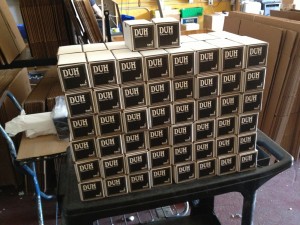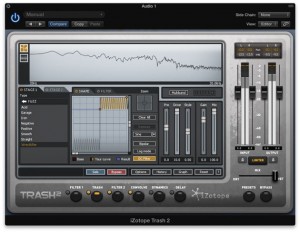… at least if, like me, you have the soul of a 12-year-old Japanese girl.
Stay One Step Ahead with the Best Payment Methods for Online Casino BonusesWhen it comes to online gambling, finding the best MuchBetter casino sites can make all the difference in your gaming experience. MuchBetter is an innovative payment solution that allows players to make fast and secure transactions. With its seamless integration and user-friendly interface, this e-wallet has gained popularity among online casino enthusiasts. Whether you are a seasoned player or new to online gambling, choosing a MuchBetter casino can provide you with a convenient and enjoyable gaming experience. One of the top MuchBetter casino sites is https://csiss.org/deposit-methods/muchbetter/. This online casino has embraced MuchBetter as a preferred payment method, ensuring that players can easily deposit and withdraw funds. CSISS offers a wide selection of casino games, including slots, table games, and live dealer options. With its user-friendly website and mobile app, players can enjoy their favorite casino games on the go. The casino also boasts a generous welcome bonus and regular promotions, ensuring that players have ample opportunities to boost their bankroll. Another excellent MuchBetter casino option is csiss. Known for its extensive game selection, this online casino caters to players of all preferences. From classic slots to progressive jackpots and live casino games, there is something for everyone at CSISS. The site also features a sleek and modern design that allows for easy navigation, making it a pleasure to explore the wide range of games. With its integration of MuchBetter as a payment option, players can enjoy swift and secure transactions, ensuring that their gaming experience is hassle-free. In conclusion, selecting the best MuchBetter casino sites can greatly enhance your online gambling experience. Not only does MuchBetter provide a convenient and secure payment solution, but it also allows for seamless integration with top online casinos like csiss.org. With its extensive game selection, user-friendly interface, and generous promotions, [CSISS] is an excellent choice for players looking for a top-notch gaming experience. So, why not give MuchBetter a try and enjoy the benefits it brings to your casino gaming? When it comes to online gambling in Austria, one of the most important factors to consider is the withdrawal process. Players want to ensure that they can access their winnings quickly and conveniently. That`s why the best online casino instant withdrawal in Austria is in high demand among avid gamblers. One platform that stands out in this regard is https://online-casino-osterreich.org/sofort/. With its seamless and efficient withdrawal system, players can enjoy their winnings instantly. One of the key reasons why this online casino is considered the best for instant withdrawals is its partnership with reputable payment providers. They offer a wide range of options, including popular e-wallets such as Skrill and Neteller, as well as traditional bank transfers. This means that players can choose the method that suits them best and receive their funds without any unnecessary delays. Additionally, the casino`s user-friendly interface and intuitive navigation contribute to a smooth withdrawal process. Moreover, this platform also prioritizes security and fairness. It holds a valid gambling license, ensuring that players` transactions and personal information are protected. Furthermore, it provides a wide selection of high-quality games from renowned software providers, guaranteeing a fair gaming experience. Whether you prefer slots, table games, or live dealer options, this online casino has something to cater to every player`s taste. In conclusion, if you`re looking for the best online casino with instant withdrawal options in Austria, online-casino-osterreichis the ideal choice. Its partnership with reputable payment providers, commitment to security and fairness, and extensive game selection make it a top-notch platform for any passionate gambler. Experience a seamless and convenient withdrawal process today by visiting their website. When it comes to online casinos, one of the most important aspects for players is the availability of secure and convenient payment methods. This is where ecoPayz casinos online truly shine. As one of the best providers in the industry, ecoPayz ensures that players can enjoy a seamless and hassle-free gaming experience while keeping their financial information safe. With its user-friendly interface and widespread acceptance, ecoPayz is a preferred choice among online casino enthusiasts. One of the top ecoPayz casinos online is https://online-casino-schweiz.org/ecopayz/. This casino not only offers a wide range of exciting games and lucrative bonuses but also provides the option to use ecoPayz for deposits and withdrawals. With just a few clicks, players can easily transfer funds, ensuring a smooth and efficient gaming experience. Additionally, this casino prioritizes customer security, utilizing advanced encryption technology to protect sensitive financial details. Another reputable ecoPayz casino is [Your Anchor Text]. With its sleek and modern design, this casino attracts players from all over the world. Thanks to its collaboration with ecoPayz, players can enjoy quick deposits and withdrawals without any additional fees. Moreover, the casino offers a generous welcome bonus and ongoing promotions to enhance the overall gaming experience. With its extensive collection of games and seamless integration with ecoPayz, this casino is a top choice for online gamblers. In conclusion, ecoPayz casinos online are excellent options for players looking for a secure and convenient payment method. With widespread acceptance and a commitment to user safety, ecoPayz ensures that players can enjoy their favorite casino games without any worries. By choosing top ecoPayz casinos like [Your Anchor Text], players can enjoy a seamless gaming experience while benefiting from quick and hassle-free financial transactions. 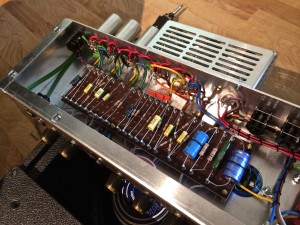 How come my DIY amps never look this pretty inside? A couple of weeks ago I posted here about a Premier Guitar project in which I built two Marshall 18-watt clone kits. Meanwhile, the magazine received a review model of Marshall’s latest iteration of the 18-watt, a high-end, hand-wired version that sells for $2,700. My new review is online at PG, if you’re curious to hear a proper Marshall as well as the clones. My take: It’s a beautifully built, hand-wired amp that sounds as least as good as either clone. Unlike the kits with their single 12″ speakers, the Marshall has a pair of 10s, which I think I prefer in this circuit. At $2,700, though, it’s pretty darn expensive, even for a beautiful, hand-made instrument. But I’ll be sad when I send the review model back to Bletchley.
Premier Guitar has posted my review of Universal Audio’s Apollo Twin interface. Short version: I love the thing. A rackmount Apollo interface has been the core of my studio for two years, replacing both a Pro Tools HD rig and a complicated Apogee setup. I adore Apollo’s great-sounding preamps, lucid interface, and innovative software, which, among other things, lets you track through simulated preamps on your way into your DAW. Also, UA’s analog modeling is second to none. (You hear their reverbs and tape simulations on most of the stuff I’ve recorded for this site.) The intensity of my Apollo love is rivaled only by my scorn for the crappy mobile interfaces I’ve previously used with my live laptop rig. The problem isn’t audio quality — even the cheapest ones can sound surprisingly decent — so much as lousy ergonomics and flimsy construction. I’ve burned through half a dozen interfaces in the last few years. They just aren’t built to last onstage. Or anywhere else. That’s why I’m so stoked to have the small-format Apollo on my digital pedalboard. It’s built well. The UI is brilliant. There are no horrid breakout cable octopi. It has the same preamps and processors as the rackmount Apollo. And I have access to my favorite UA plug-ins, including the juicy EMT plate reverb simulations, the stellar tape echo models, and a suite of low-latency virtual preamps. It’s pricy for a mobile interface: $700 for the single-processor model and $900 for the dual-processor model. But I’d spent far more than that on self-destructing junk that I wound up giving away or recycling. Anyone else tried Apollo in its various formats? Or any other cool converters? Your observations, please? Sorry my blog posts have been a bit scarce lately. A few weeks ago, my super-cool 91-year-old dad (who sometimes posts here) went to Joshua Tree, tripped, and fractured his hip. So to help out, I’ve been shuttling the 400 miles from my home in San Francisco to West Covina, the right-wing, smog-shrouded LA suburb where I grew up, and where Dad still lives with his equally cool wife. (He’s mending well, BTW, and is running his physical therapists ragged.) On my last road trip, I got to thinking about musical geography in America, and how it once defined our music. Not too many decades ago, we associated musical styles with the regions that produced them. Cities had sounds: Detroit. Frisco. Philly. Memphis. Do those distinctions retain any meaning whatsoever? Or has music succumbed to the mass-media homogeneity that transformed the once vibrant medium of radio into the soulless monolith of Clear Channel, and once-glorious roadside America into an bleak expanse of Walmarts and Olive Gardens? ![Should you embrace your hometown influences? Or flee them? [Pictured: West Covina dipshits.]](https://tonefiend.com/wp-content/uploads/West-Covina-300x210.jpg) Should you embrace your hometown influences or flee them? (The dipshits I encountered on my last visit to West Covina made a strong case for “flee.”) My general question is rhetorical — of course we’ve sacrificed regional color to a beige, big-box economy! But there’s a more specific underlying question: Does where you come from continue to have any bearing whatsoever on what your music sounds like? Is it different for a middle-aged guy like me — who spent at least a few formative years at a time when musical geography mattered — than for young musicians coming up today? And most important, what about you? Is where you learned to play reflected in how you play? I’d fled LA literally and conceptually by the time I was 20. (A stupid move, perhaps — I’d probably have a more successful career had I stayed.) But do I still have Southern California in my hands? Have subsequent decades in Northern California overwritten them? Or does that stuff even matter anymore? It’s hard to tell, looking at myself. I conform to some San Francisco musical stereotypes but not others. (I’m freaky and free-spirited, but I hate meandering stoner jams.) Meanwhile, LA continues to represent much I loathe musically, but I bear the permanent mark of the kitschy SoCal pop of the ’60s my mom played when I was a little kid. The Association, Herb Alpert, the Fifth Dimension. (You know — the real sound of the ’60s.) And while I’m probably just flattering myself, I’ve always felt a kinship with the warped perspectives on roots music provided by outsider Southern Californians like Waits, Cooder, and Van Vliet. How about you? Does your country, state, or city color your music? Can we hear where you’re from when you strum? Premier Guitar just posted my new article on three favorite electric guitar wiring mods. The concepts won’t be new to anyone who hangs out here — I’ve pretty much flogged them all to death! But the new article includes the step-by-step walkthroughs that I never got around to creating for this site, and PG art director Meghan Molumby created beautifully clear tech diagrams like this one:
The descriptions and instructions in the new story are clearer and more detailed than my original posts here, plus I’ve refined some details, so I suggest working from the new PG versions. My three choices: Yup, the ol’ PTB tone control, the coolest mod I know, at least for players who love distortion. The new version of the project uses the 500K pots you probably already have in your guitar rather than the more eccentric G&L values. I also revisited the Strat version of the “Nashville-style” Tele wiring popularized by Brent Mason and other Music City cats. It performs brilliantly in a Strat, and IMHO its benefits (vastly more blended-pickup options plus a musical and intuitive control layout) for outweigh the costs (loss of the middle-pickup-alone setting, cost of a 3-way switch). Not to launch a protracted Strat-vs.-Tele battle, but I love the whole notion of “Tele-fying” a Strat via wiring, control layout, and pickup choice. In the article’s comments thread, several savvy readers also mention Strat wiring systems that provide the sounds of the Nashville mod without sacrificing any others. They’re right — but the more I mess with this stuff, the more I value simplified operation. I’m less concerned with having all options than with having the coolest ones, ergonomically organized. Still, there are many ways you can go here. Finally, I’m once more It was fun when PG editor Shawn Hammond asked me to choose my favorite mods. It was easy to decide though — these are the three I keep coming back to, and all three deliver dramatic results, unlike many better-known mods. So which electric guitar mods would be on your short list? Wiring, hardware, whatever. How do you make your guitars cooler?
Wow — I can’t believe my eyes! After years of planning, scheming, and screwing around, my very first batch of production fuzz pedals has arrived at my distributor, ready for sale. Will they gather dust or sell like hotcakes? That depends on you, dear reader! You can read about the Duh Remedial Fuzz, hear a demo, and place orders from the product page at Vintage King. (For now, Vintage King is my sole distributor.) If you’ve been following my videos, you’ve heard Duh already — I’ve got the circuit mounted inside some of my favorite guitars, including the Hello Kitty! and lipstick-tube Strats. Excuse me for quoting again from the great review I got in Guitar Player — I’m just a proud pedal papa! Have a cigar.
I had a blast building and testing two Marshall 18-watt kits for a Premier Guitar story — and I emerged with new respect for this cool 1965 design. These mini-Marshalls were neglected in their day, but are now treasured. The oft-heard claim that they provide plexi tones at reasonable volumes is only partially true — these are open-backed combos powered by a Vox-like pair of EL-84s tubes. But while they have roughy the same horsepower as the era’s Fender Deluxe and Vox AC15, their tone is undeniably ’60s Marshall. In the studio, they sound far larger than their actual size. And out of the studio, they’re still pretty darn loud. 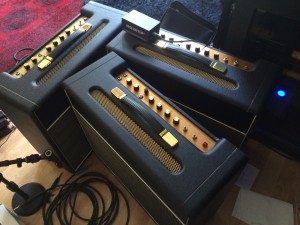 I’ve never seen three 18-watts in the same place before. Even though the Mojotone and Tube Depot kits I built share the same schematic (and identical cabinets, both made by Mojotone), the build experiences and final results differed greatly. And just when I thought I’d scaled the Everest of 18-watt ecstasy, I get a real Marshall 18-watt reissue for an upcoming Premier Guitar review. Stay tuned. Are any of you guys 18-watt fans? Any observations to share?
While in LA last weekend, I got to hang out with the guy who built my favorite modern guitar: the brilliant James Trussart. I’ve been privileged to know many great luthiers over the years, but the thing that always impresses me about James is the way his instruments seem to be just one expression of a larger artistic sensibility. James grew up on a farm in rural France, but came to the States in the ’70s to play Cajun fiddle. He seems to have always been fascinated by vanishing Americana, be it an endangered folk music style, a faded and rotting road sign, or an ancient car rusting in a field. With their richly textured surfaces and variegated patinas, his metal-bodied guitars exude that same aesthetic. I’ve never known brand-new instruments to impart such a strong sense of the past. 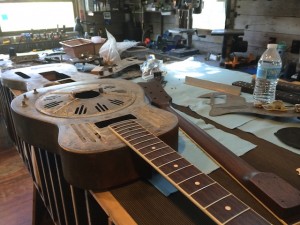 A Trussart resophonic under construction. James lives in a rambling old Arts and Crafts bungalow in LA’s Echo Park neighborhood, a place where every room possesses a rich texture of passing time. He’s surrounded by cool instruments — both his own and many lovely vintage guitars — and much beautiful metal work: doors, gates, plaques, and whatnot, all crafted by James. A detached building in back houses the workshop where James and his assistants build several hundred instruments per year. One of James’s Steelcasters has been my favorite modern guitar for over a decade. (Here is a nice example of the guitar in action with Tracy Chapman, and here’s another example with the Eels.) Later I got in the habit of tuning the entire thing down a whole-step, with the lowest string dropped to C. I recorded the entire Mental 99 album in a day using this inspiring instrument. Thanks, James. A highlight of this visit was James’s demo of his Percuphone — an electro-mechanical stringed instrument created in the ’70s by his friend Patrice Moullet. (Here’s a French-language Wikipedia article about the instrument, and here’s a YouTube video of a more recent model.) Check it out: I always feel inspired after hanging out with James. And not just guitar inspiration, but an overarching desire to make, do, and surround myself with inspiring things. Merci beaucoup, mon ami. :beer:
I had a lot of fun putting together an article for Premier Guitar on using non-tube distortion. It features a smorgasbord of digital tones guaranteed to horrify tube purists. (It’s certainly horrifying a few commentators on PG‘s Facebook page.) It was also a chance for me to explore iZotope’s Trash 2, on the recombination of my ol’ pal Jeff Cross, who is one of the most super-genius of the super-genius audio guys I’ve worked with at Apple. I was a fan of the first version of Trash, though I didn’t have the opportunity to use it a lot. This generation is even cooler, and seems to focus less energy on conventional amp modeling than on being a wild and open-ended distortion-designing tool. I’ll definitely be spending some more time with this! I also enjoyed playing with FXpansion’s Maul, which covers much similar territory. Have any of you guys played with some of these digital distortion-designer tools? Any observations? I just watched an amazing documentary on Netflix: The Source Family, the story the early-’70s cult led by James “Father Yod” Baker. Baker’s Sunset Strip restaurant, the Source, was a fixture of my LA youth — a popular hang for both hippies and music-industry types. (You’ve probably seen it as the backdrop for the breakup scene in Woody Allen’s Annie Hall.) 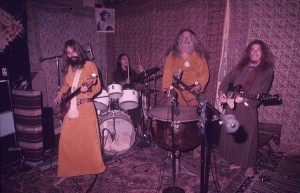 The hell with cowbell! We need more tympani! One of Baker’s less eccentric notions was to blow a fortune on music gear and a pro studio, where his self-styled “band,” Ya Ho Wa 13, reportedly recorded 65 albums’ worth of improvised music, much of which has been reissued in recent years. Prolific, chaotic, and fueled by a philosophy comprehensible only to its creator, the body of work is a bit reminiscent of Sun Ra’s, minus the talent. Perhaps the best thing you can say about Baker is that he was no Manson. I don’t know that anyone died on his watch other than Baker himself (in an idiotic stunt I’ll refrain from sharing so as not to spoil the film’s stupefying denouement, though you can devour the details here if you like). But he was a serial psycho-sexual abuser who acquired 14 very young wives while liberating hundreds of starry-eyed acolytes from their worldly possessions and cruising LA in a white Rolls Royce. Among the film’s most remarkable scenes are Ya Ho Wa 13’s recruiting concerts held at well-to-do West Side high schools and colleges, including my alma mater. Just … wow. (Buttloads more audio/video here.) To its credit, though, the film isn’t moralistic in the slightest — directors Maria Demopoulos and Jodi Wille tell the story via the words of its witnesses, supplemented by film and photos of the cult’s own Isis Aquarian, Baker’s anointed archivist. (They report — you gawp in astonishment.) Many surviving members appear onscreen, as do such rock admirers as Billy Corgan and Don Bolles of the Germs. The film is a companion to Isis Aquarian’s 2007 book (co-written with fellow Source family member Electricity Aquarian), The Source: The Untold Story of Father Yod, Ya Ho Wa 13, and the Source Family. The book includes a CD of Ya Ho Wa 13’s music. I haven’t read it — but will now!  Fictional mugshots of our fictional band’s fictional 1969 arrest, along with their fictional cult leader. I knew the general outlines of the Source story, but not the hundreds of bizarre details that make it so compelling. Elise Malmberg and I drew from it a decade ago while creating Clubbo Records, our “music fiction” project. We concocted the Fold, a fictional hippie cult band, using bits pilfered from various spiritual scams of the era, including the Source and the equally fascinating Process Church. (A fictionalized Process Church also figures in Last Days, a darn good horror novel by Adam Nevill, though not quite as awesome as Nevill’s The Ritual, with its Scandinavian black metal underpinnings. It’s as scary/funny as actual black metal.) Naturally, our fake story isn’t one-tenth as interesting as the shit that actually happened. But it did produce “Into the Fold,” one of our best bits of counterfeit music, featuring the brilliant Chuck Prophet singing the Morrison-esque role of Gary “Shep” Shepheard, who fronted the Fold’s rock band under the direction of cult leader Maestro Ludgang. (Elise wrote the song, and I played the music, except the drums, which are by Patrick Campbell. Other friends served as photo models.) Meanwhile, I’ve been working on a new piece that has some sounds and phrases I like, but has steadfastly refused to take shape. I tried recording it the other night, but every soloistic element I added sounded stupid. When live-looping, I’m so self-conscious about excessive repetition that I use every trick I can muster to vary the sound and move things along. This time, though — under the spiritual influence of The Source Family, perhaps? — I just let the loops roll, visualized my ego dissolving into a pool of pearlescent light, and dug on the trance. Man. It’s called “Unfolded,” after the Fold, of course. But please, folks — if I start calling myself Maestro Ludgang Aquarian, do me a favor and stage an intervention. 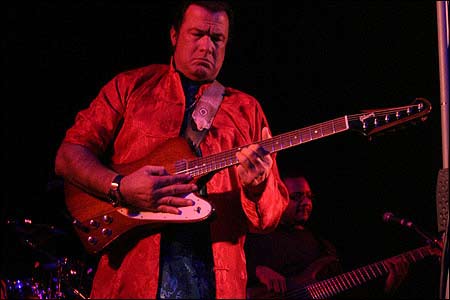 Actor Steven Seagal, who belongs to the homophobic (yet oddly homoerotic) Vladamir Putin cult, plays a reverse Firebird like the one that Ya Ho Wa 13 used. Coincidence? UPDATE [06.16.14]: Okay, this is too great: I just shared this post with my pal/fellow Premier Guitar editor Charlie Saufely, who told me he played for a Ya Ho Wa 13 tribute band that performed in front of original band members when this film premiered at San Francisco’s Roxy Theater. Afterwards he got to jam with Djin, the guitarist. “It was a thrill,” Charlie says. “He was way more into skronking than blues jamming. We kinda went off on a Thurston-and-Lee, hail of sonic scree barrage. He had the Firebird … it was surreal. He reached over at one point and started scraping my strings with his fingernails. That was pretty sweet!” |
|
